 November 25, 2009 John E. Ross, KD8IDJ, Editor
| |||||||||
ARRL Headquarters Closed for Thanksgiving Holidays
ARRL Leadership: New Vice Directors in Central, Roanoke Divisions
On Friday, November 20, ARRL staff members started opening ballots for the Vice Director races in the Central and Roanoke Divisions. After all the ballots were counted, both the Central and Roanoke Divisions gained new Vice Directors, with their three-year terms beginning at noon on January 1, 2010. In the Central Division, challenger Kermit Carlson, W9XA, of Batavia, Illinois, edged out incumbent Howard S. Huntington, K9KM, of Hawthorn Woods, Illinois; Huntington has served as the Central Division's second-in-command since 1983. Carlson received 1808 votes, while Huntington received 1466 votes.
Roanoke Division Vice Director Patricia Hensley, N4ROS, decided not to seek another term. South Carolina Section Manager Jim Boehner, N2ZZ, of Aiken, and former West Virginia Section Manager Hal Turley, W8HC, of Huntington, were both nominated to succeed her. Boehner won the election with 1692 votes; Turley received 1496 votes. Read more here. ARRL Field Organization: Incumbent Section Managers Win New Terms of Office
Regulatory: FCC Looks to Revise, Clarify Vanity Call Sign Rules
On Wednesday, November 25, the FCC issued a Notice of Proposed Rule Making (NPRM) -- WT Docket No. 09-209 -- seeking to amend the Commission's Amateur Radio Service rules to clarify certain rules and codify existing procedures governing the vanity call sign system, as well as revise certain rules applicable to club stations. According to the FCC, almost 80,000 licensees have replaced their sequentially issued Amateur Radio call signs with a vanity call sign since the program began in 1996. When the program began, the Commission established what they called "the broad outlines" of the vanity call sign system, concluding that call signs generally should not be available for reassignment for two years following the death of a licensee, or expiration or termination of the license for that call sign. In doing so, the Commission made exceptions for former holders of the call sign, close relatives of a deceased former holder and club stations of which a deceased former holder was a member. The Commission did not, however, specify all of the procedures governing the vanity call sign system, but indicated that the procedures "would be set out in the Public Notices announcing 'starting gates' for the groups receiving initial priority and that the procedures would be adjusted from gate to gate as experience dictated." The procedures announced in the Public Notices announcing the gates are still in effect, but they are not set forth in the Commission's Rules. The NPRM states that the FCC "now believe[s] that certain provisions should be codified in our rules, and others added, so that the vanity call sign system will be fair, equitable and transparent to all amateur service licensees. The Commission also decided in the Vanity Report and Order [issued in 1996] to resume issuing new club station licenses. We believe that certain rule changes to the club station licensing rules may be appropriate." The comment period for WT Docket No. 09-209 will extend for 60 days after it is published in the Federal Register. Historically, items appear in the Federal Register approximately 7-10 days after they appear on the FCC Web site. Reply comments can be made up to 75 days after publication in the Federal Register. Read more here. Silent Key: ARRL Sweepstakes Manager Ken Adams, K5KA (SK)
Ken Adams, K5KA, succumbed to cancer and passed away on Sunday, November 22. He was 64. Adams -- an ARRL Life Member -- served as the first-ever Contest Manager for the ARRL Sweepstakes, coming on board in 2005. "Ken was a 'get it done' kinda guy," recalled ARRL Contest Branch Manager Sean Kutzko, KX9X. "He took on the task of Sweepstakes Manager with great enthusiasm, rolled up his sleeves and championed the event like nobody else I've ever seen." Read more here. Amateur Radio and Technology : ARRL, McSnyder Software Team Up to Provide iTunes Apps
ARRL is pleased to announce the availability of a new suite of Amateur Radio mobile software -- designed specifically for use with the Apple's iPhone and iPod Touch. The applications -- or "apps" -- are named ARRL Technician, ARRL General and ARRL Extra and function as an electronic version of practice exam flash cards. Amateur Radio exam candidates can use the applications as a study companion to the ARRL license manuals and classroom instruction. The apps include all the possible questions and answers that will be on each of the license tests. Users can flag questions that need more review, segment questions for study by sub-element, or even study the questions in a random order. The ARRL apps are produced and sold by McSnyder Software who has partnered with ARRL to provide the iPhone app series. McSnyder has also produced study applications for other organizations -- including exam preparation software for standardized educational testing in Texas, as well as US Citizenship immigration testing. "We are excited to introduce Amateur Radio and ARRL into the rapidly expanding mobile and portable technology arena," said ARRL Marketing Manager Bob Inderbitzen, NQ1R. "Not only do these applications demonstrate ARRL's commitment to users of these popular devices, the software helps promote Amateur Radio outside of our traditional publication channels." The ARRL apps are available for $1.99 each on Apple's iTunes "App Store." Now You Know!: The ARRL Lab By ARRL News Editor S. Khrystyne Keane, K1SFA The hams who work in the ARRL Lab -- Ed Hare, W1RFI; Mike Gruber, W1MG; Zack Lau, W1VT, and Bob Allison, WB1GCM -- receive more than 100 calls each week, requesting assistance. I know that whenever I venture into the Lab, rife with deep, dark secrets of the Amateur Radio world, one, if not all four of these guys are either on the phone or on the computer, answering questions posed to them by members.
One afternoon, I wandered down to the Lab, and asked Zack, Mike and Bob, "What is the most common question you guys receive from our members?" Zack quickly answered: "They want to know what kind of radio to buy." Now, no one here at League Headquarters can tell you which radio to buy, but Zack explained to me how he walks through a question set with the caller: What do you want to do with the radio? Do you want to get on HF, or are you interested in emergency communications or just ragchewing on your local repeater? How much room do you have to set up a station? How much money is in your budget for a new rig? Once the caller answers these questions, Zack guides them toward certain classes of radios, giving the caller a narrower field to look at. He also suggests that they take a look at the ARRL online publication, Choosing a Ham Radio, as well as the Technical Information Service (TIS) section on the ARRL Web site. The next most popular questions (in order) are:
So, even if you're an experienced ham who has seen just about everything, or if you just got your Technician license in the mail (or, like me, you're somewhere in between), and you have a technical question that you just can't seem to figure out the answer to, try calling on the ARRL Lab -- they just might be able to help you figure it out. Now you know! Solar Update
Tad "That its mild light creates to heal again" Cook, K7RA, reports: This edition of the Solar Update will be brief. Since ARRL Headquarters is closed on Thanksgiving Day and the day after, I hope to have another bulletin out Monday morning to catch up with the sunspot, solar flux and geomagnetic data information. In last Friday's Solar Update, we reported sunspot numbers for November 12-18 as 11, 0, 0, 11, 12, 0 and 29. Since then, from November 19-24, they were 30, 31, 14, 13, 0 and 0 -- definitely nice conditions for the ARRL SSB Sweepstakes last weekend. This weekend, November 28-29, is the CQ Worldwide CW DX Contest. Although recent activity seems a good trend, we have no indications when sunspots will return. Look for more information in the Solar Update, available on the ARRL Web site on Monday, November 30. For more information concerning radio propagation, visit the ARRL Technical Information Service Propagation page. This week's "Tad Cookism" brought to you by John Keats' Woman! When I Behold Thee Flippant, Vain... Amateur Radio in Space: New Antennas Installed on ISS
On Saturday, November 21, astronauts Mike Foreman and Randy Bresnik completed the second EVA (extra-vehicular activity) -- NASA's term for a spacewalk -- of their mission. While on the 6 hour, 8 minute EVA, Foreman installed the Amateur Radio on the International Space Station (ARISS) antennas for 2 meters and 70 cm on the Columbus module. NASA ISS Ham Radio Project Engineer Kenneth Ransom, N5VHO, told the ARRL that this new antenna -- along with another VHF antenna -- was developed by ARISS in cooperation with the European Space Agency (ESA) to support an experiment involving the maritime Automatic Identification System (AIS). "Both antennas were installed on the Earth-facing starboard edge of the Columbus module," he explained. "The AIS antenna is forward and the ARISS antenna is aft. The ARISS team is planning to migrate some stowed Amateur Radio gear to take advantage of the new antenna." Frequencies available for transmission to and from Columbus will be 2 meters, 70 centimeters and 13 cm. To start, two radios for 2 meters and 70 cm that don't see much use on the ISS will be moved and installed in Columbus . The space shuttle Discovery is expected to return to Earth on Friday, November 27 and will bring Nicole Stott, KE5GJN, back from her stay on the ISS. This Week on the Radio This week, look for an NCCC Sprint on November 27. The CQ Worldwide DX Contest (CW) is November 28-29. Next week, the ARRL 160 Meter Contest is December 4-6 and the ARRL International EME Competition is December 5-6. The TARA RTTY Melee and the Wake-Up! QRP Sprint are December 5. The TOPS Activity Contest is December 5-6, the ARS Spartan Sprint is December 8 and the NAQCC Straight Key/Bug Sprint is December 9. All dates, unless otherwise stated, are UTC. See the ARRL Contest Branch page, the ARRL Contest Update and the WA7BNM Contest Calendar for more info. Looking for a Special Event station? Be sure to check out the ARRL Special Event Station Web page. ARRL Continuing Education Course Registration
| |||||||||
 ARRL Headquarters will be closed November 26 and 27 in observance of Thanksgiving. There will be no
ARRL Headquarters will be closed November 26 and 27 in observance of Thanksgiving. There will be no 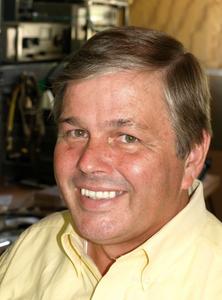

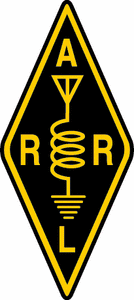 Three incumbent Section Managers were re-elected in races that concluded on Tuesday, November 24. In Alabama, Jay Isbell, KA4KUN, received 513 votes; challenger Les Rayburn, N1LF, received 167 votes. Isbell, of Bessemer, will begin his second term as Section Manager on January 1, 2010. In the Alaska Section Manager election, Jim Larsen, AL7FS, of Anchorage, won his second two-year term of office when he received 176 votes; challenger David Stevens, KL7EB, received 65 votes. Ron Cowan, KB0DTI, of LaCygne, Kansas, will continue as Section Manager; he received 382 votes while challenger Joseph Plankinton, WD0DMV, received 175 votes. Cowan has been the Kansas Section Manager since 2003. The following incumbent ARRL Section Managers did not face opposition and were declared elected for their next terms of office beginning January 1, 2010: Jim Latham, AF6AQ (East Bay); Frank Filipkowski, AD3M (Delaware); Dale Williams, WA8EFK (Michigan); Don Wood, W5FHA (New Mexico); Glen Clayton, W4BDB (Tennessee); Robert Griffin, K6YR (Santa Barbara), and Ed Emco, W1KT (Western Massachusetts).
Three incumbent Section Managers were re-elected in races that concluded on Tuesday, November 24. In Alabama, Jay Isbell, KA4KUN, received 513 votes; challenger Les Rayburn, N1LF, received 167 votes. Isbell, of Bessemer, will begin his second term as Section Manager on January 1, 2010. In the Alaska Section Manager election, Jim Larsen, AL7FS, of Anchorage, won his second two-year term of office when he received 176 votes; challenger David Stevens, KL7EB, received 65 votes. Ron Cowan, KB0DTI, of LaCygne, Kansas, will continue as Section Manager; he received 382 votes while challenger Joseph Plankinton, WD0DMV, received 175 votes. Cowan has been the Kansas Section Manager since 2003. The following incumbent ARRL Section Managers did not face opposition and were declared elected for their next terms of office beginning January 1, 2010: Jim Latham, AF6AQ (East Bay); Frank Filipkowski, AD3M (Delaware); Dale Williams, WA8EFK (Michigan); Don Wood, W5FHA (New Mexico); Glen Clayton, W4BDB (Tennessee); Robert Griffin, K6YR (Santa Barbara), and Ed Emco, W1KT (Western Massachusetts).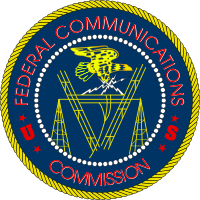
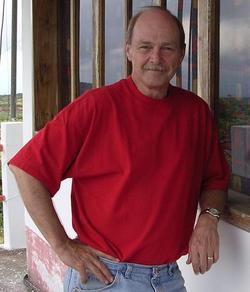

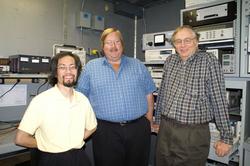
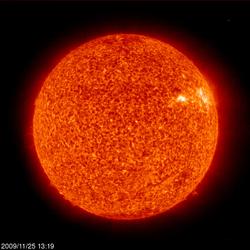
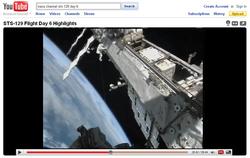
 Registration remains open through Sunday, December 27, 2009, for these
Registration remains open through Sunday, December 27, 2009, for these 







